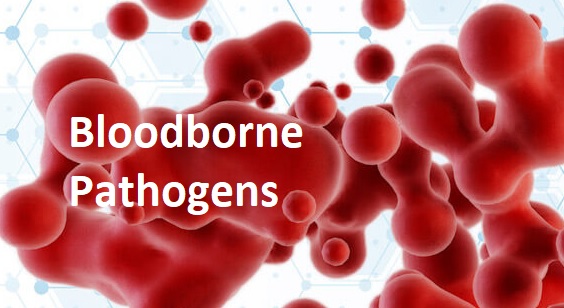How do bloodborne pathogens spread?
Blood-borne pathogens spread when an infected individual comes into contact with an uninfected individual. But what type of contact and how much contact is necessary for actual transmission to occur?
The two main methods of transmission of blood-borne pathogens include sharing of hypodermic needles (eg illicit drug use) and sexual activity. In addition, one can also acquire infection by contact between the mucous membranes of the eyes, mouth, nose, and genitals. Finally, infected mothers can also transmit certain infections to their babies during pregnancy and delivery.
How are healthcare workers exposed to blood-borne pathogens?
- Needlestick injury is quite common
- Inhalation of aerosolized particles generated during coughing, speaking, sneezing
- Suffering a puncture wound from a sharp object like a scalpel blade or needle
- Accidental blood exposure or contact with the mucous membrane of an infected person
In all cases, the risk of acquiring blood pathogens is lowest when the skin is intact and healthy. Secondary staff including cleaners and garbage collectors often get stuck with sharp objects during the cleanup of blood, body fluids and removal of sharp containers.
In most healthcare workers, the primary mode of transmission of blood-borne pathogens is direct contact with infected blood. Besides sharing needles, drawing blood from individuals and handling dirty needles are also common causes of transmission. In general, the highest risk of acquiring an infection is after contact with fresh blood. But most blood borne pathogens can live for 5-7 days outside the body. What this means is even dry blood can also transmit hepatitis B, hepatitis C, and HIV.
Preventing bloodborne pathogen infections
The ideal way to prevent the spread of blood-borne pathogens is to follow universal precautions.
Universal precaution steps
- Continuous education and seminars; All employers must provide regular training and education to their healthcare workers about blood-borne pathogens. In addition, the employer should provide seminars on the safe handling and disposal of blood and other biological agents
- Frequent Hand washing; employers should make available clean washroom facilities with water, soap, and disposable tissues.
- Use of personal protective equipment (PPE);
- Employers should provide protective eyeglasses and a mask when an employee is going to be working with blood, body fluids, or feces.
- Further, gowns or aprons must be available and worn when there is a high probability that clothing is likely to come into contact with body fluids.
- Employers should also provide masks and gloves for all employees that are at risk for exposure to biological fluids.
- The employer should train employees on how to use PPE and ensure that all PPE are in working order.
Sterilizing and cleaning of contaminated areas;
- Should always wear gloves during cleaning
- The use of disposable towel is recommended to wipe away body fluids
- Always decontaminate the area with household bleach (1:100 solution) or a germicide approved for hospital use
- After use, thoroughly rinse, wash and disinfect all medical equipment.
Hand Washing
- Must be a priority for all healthcare workers
- It is one of the most effective ways to prevent the spread of infections
- Hands should b washed after contact with a contaminated surface or any type of bodily fluid
- Wet hands with water and then use soap for at least 10 seconds
- Wash and scrub the fingernails thoroughly with a brush
- Hands must be clean and dry before contact with another patient
Gloves
- Employer should provide both vinyl and latex gloves for all employers who have the potential to come into contact with bodily fluids, and fecal material
- Dispose all gloves after use
- Wash hands thoroughly after removing the gloves
.Resuscitation Equipment
To reduce the risk of exposure during emergency mouth to mouth resuscitation, the employer should prove disposable mouth and nose pieces
Safe handling/disposal of contaminated material
All healthcare workers should know how to handle biological waste. Employees who are responsible for handling biological waste should wear puncture-resistant gloves and take precautions to prevent body contact. Biological waste should never be mixed with regular waste. Further, all biological waste should be considered potentially infectious.



